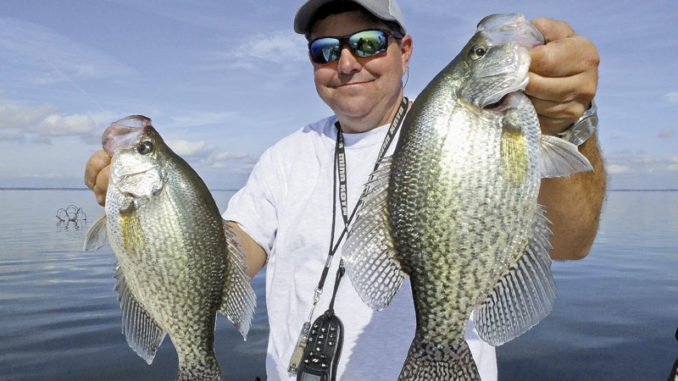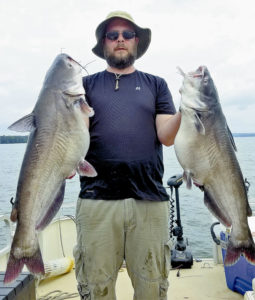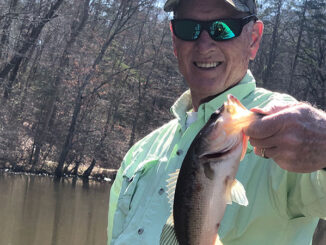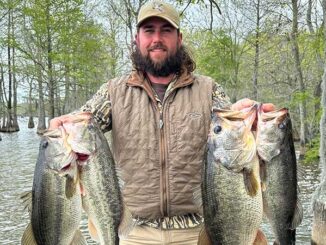
Consider wind, saves, dissolved oxygen and look in shallower water in September
September fishing at Santee Cooper can be a confusing time for many anglers. That’s because logical thinking is not always the best in terms of where to fish.
Kevin Davis, who owns Blacks Camp on Lake Moultrie, said a lot of fishermen think that fishing deep water is the logical choice, because of high air and water temperatures. But for the most part, that’s not the best choice.
Windy Perspective
“By September, the weather and water temperatures are some of the hottest of the year,” Davis said. “Traditional thinking would be to fish deep to beat the heat. But I’ve found that, for the most part, that’s not nearly as productive as fishing the right places in much-shallower water.”
Davis said dissolved oxygen is a key to hot-water fishing success. And it’s not always best in the deep water. On the Santee Cooper lakes, it’s water typically in the shallow to 20-foot depth range.
“But not all of the lake with less than 20 feet of water is equal in terms of dissolved oxygen,” he said. “I’ll consider the wind and wave patterns for the previous week. This wind pattern creates the best situation for more dissolved oxygen in the water.
“A steady wind from the west, for example, typically means the best dissolved oxygen will be on the eastern side of the lake — from wind and wave action. That’s true from any wind direction. Go to the side where the wave action has been stirring the water. The dissolved oxygen is a key to finding fish.”

Mussel Up
Davis said another reason to focus on shallower water if you’re catfishing is because one of their prime hot-weather feeding habits is eating mussels.
“Catfish gorge on mussels during the hot weather. And that includes September,” Davis said. “Fishing mussel beds is a prime tactic. And most of the mussel beds are in fairly shallow water. The prime areas for mussel beds are the tops of hills and ridges in water shallow enough for sunlight to penetrate so mussels can thrive.”
Davis said a lot of the catfish caught in September are fat from gorging on mussels. And anglers cleaning catfish find they have a stomach full of empty mussel shells.
“Fishing around mussel beds on the downwind side of the lakes is perfect strategy for catching catfish, including monster cats,” he said. “Also, I strongly suggest anglers downsize their baits, such as cut bait, to better match the size of the mussels. This is a prime time to catch catfish of all sizes on smaller baits.”
Davis said the best tactic is drift-fishing to cover a reasonable amount of water. When you find a place where lots of catfish are feeding in a small area, anchor-fishing can be productive. But otherwise, drift for best results.
Heavy Bass, Crappie Cover
Davis said the largemouth bass bite is good in September. But a lot of fish retreat to extremely heavy cover and to shallow water in windblown areas.
“I’ve found that bass will get deep into the grass mats where the cover is so thick above them it’s like an umbrella,” he said. “Some big fish can be caught, but fishermen will have to rely on lures that can effectively fish this thick habitat.”
Working the edges of the grass or weeds can produce some fish. But typically the bigger fish are back in the cover, where the oxygen content is good and they also have plenty of forage opportunities, Davis said.
“But they’ll certainly bite when anglers work lures over the top or punch a lure down through the cover,” he said. “The bite is much better when fishing very early and very late in the day under low-light conditions.”
Davis said September can be tough for crappie fishing, but fish will hold tight to heavy cover such as brush piles around 20 feet deep.
“Decent catches can be made, but anglers will have to fish hard and be patient to catch crappie,” he said. “In a few weeks, in late October and November, the crappie action will likely be very good. To be successful during September requires perseverance. But crappies can be caught.”
Davis said the bottom line for any September fishing is to think skinny water, not deep water. And watch weather and wind patterns to stack the odds in your favor for better fishing.
“At this time of the year, when the water temperature is high and the dissolved oxygen is low, taking the time to plan your strategy often means the difference in only a few fish or a big catch,” he said.





Be the first to comment